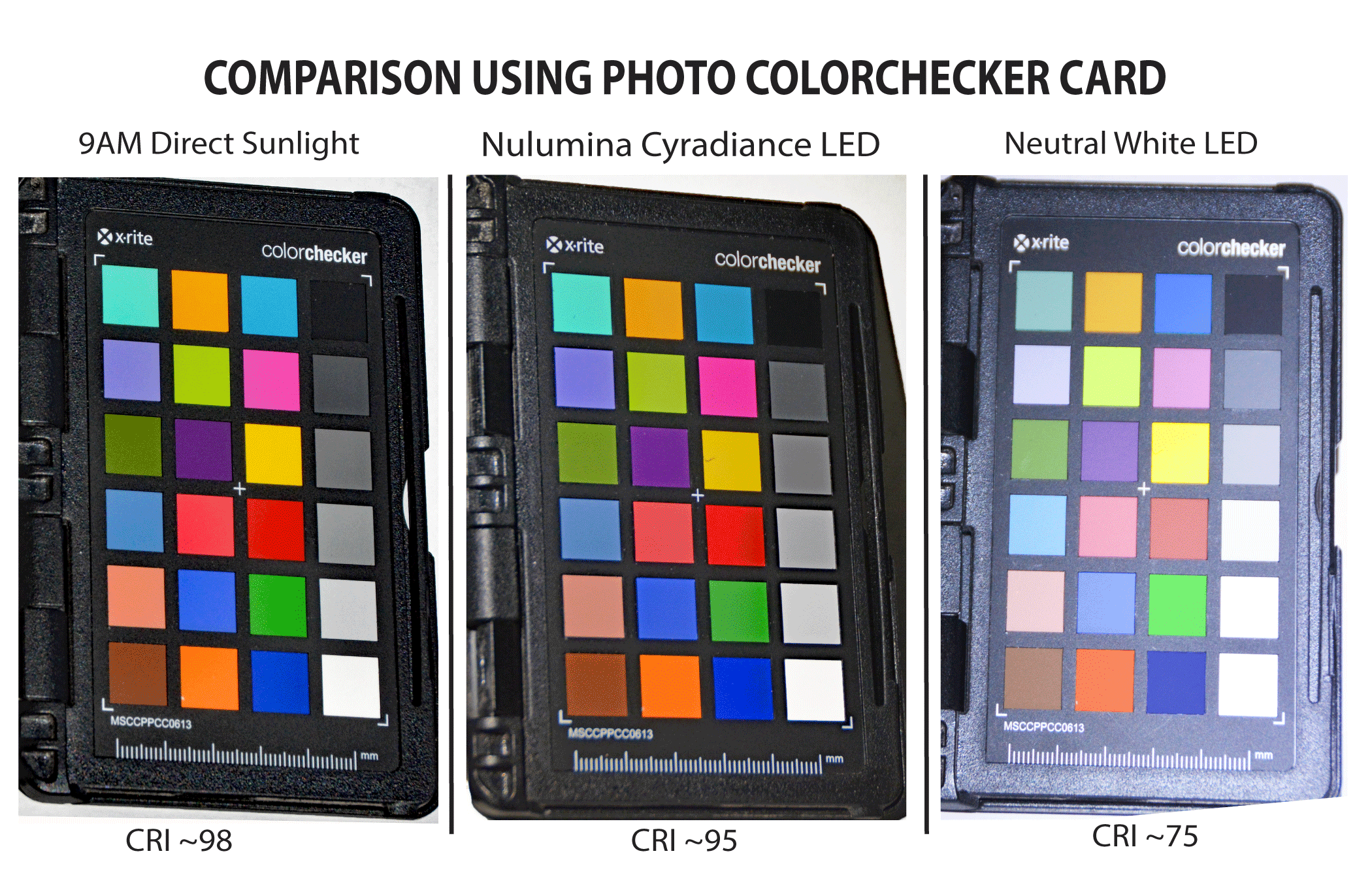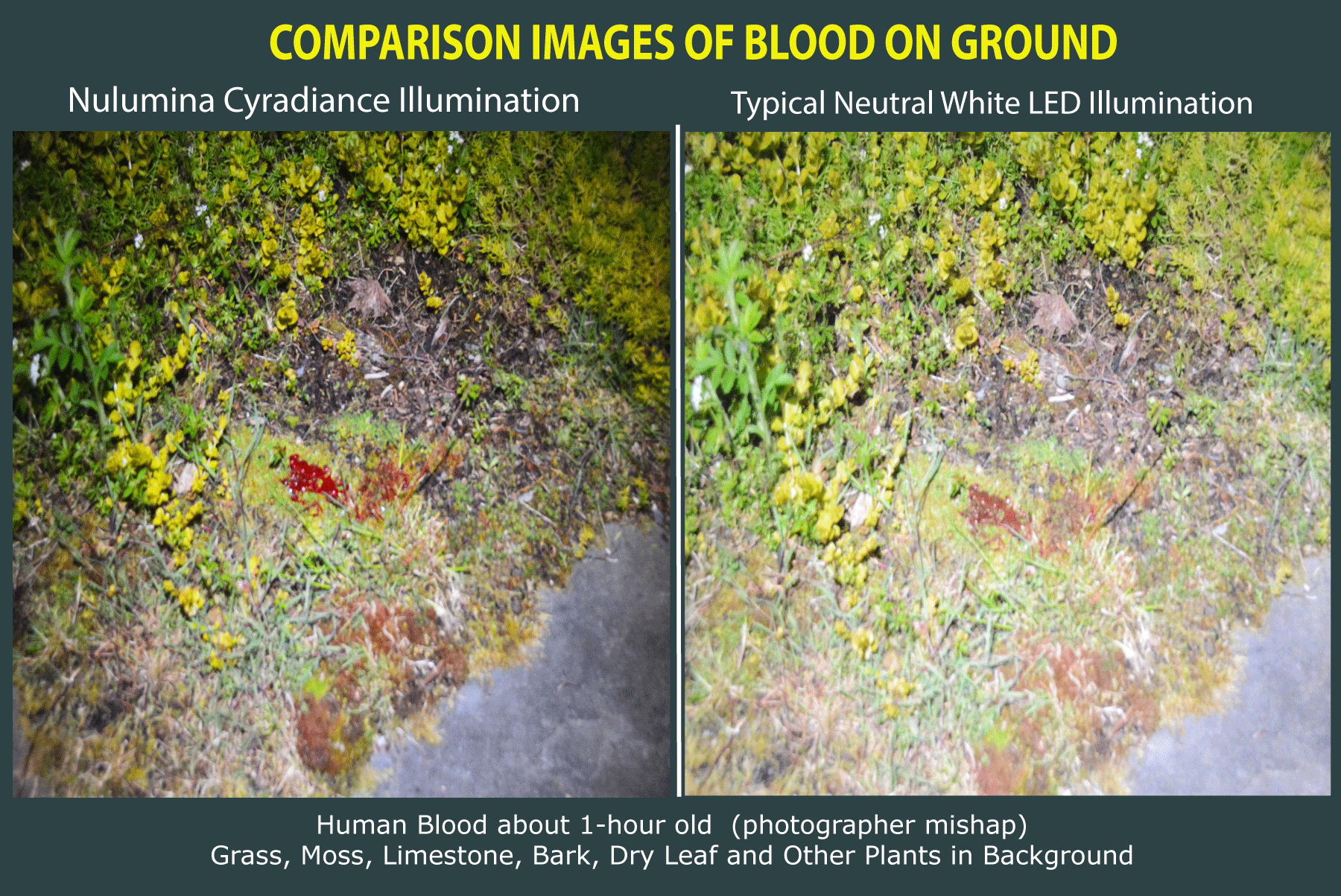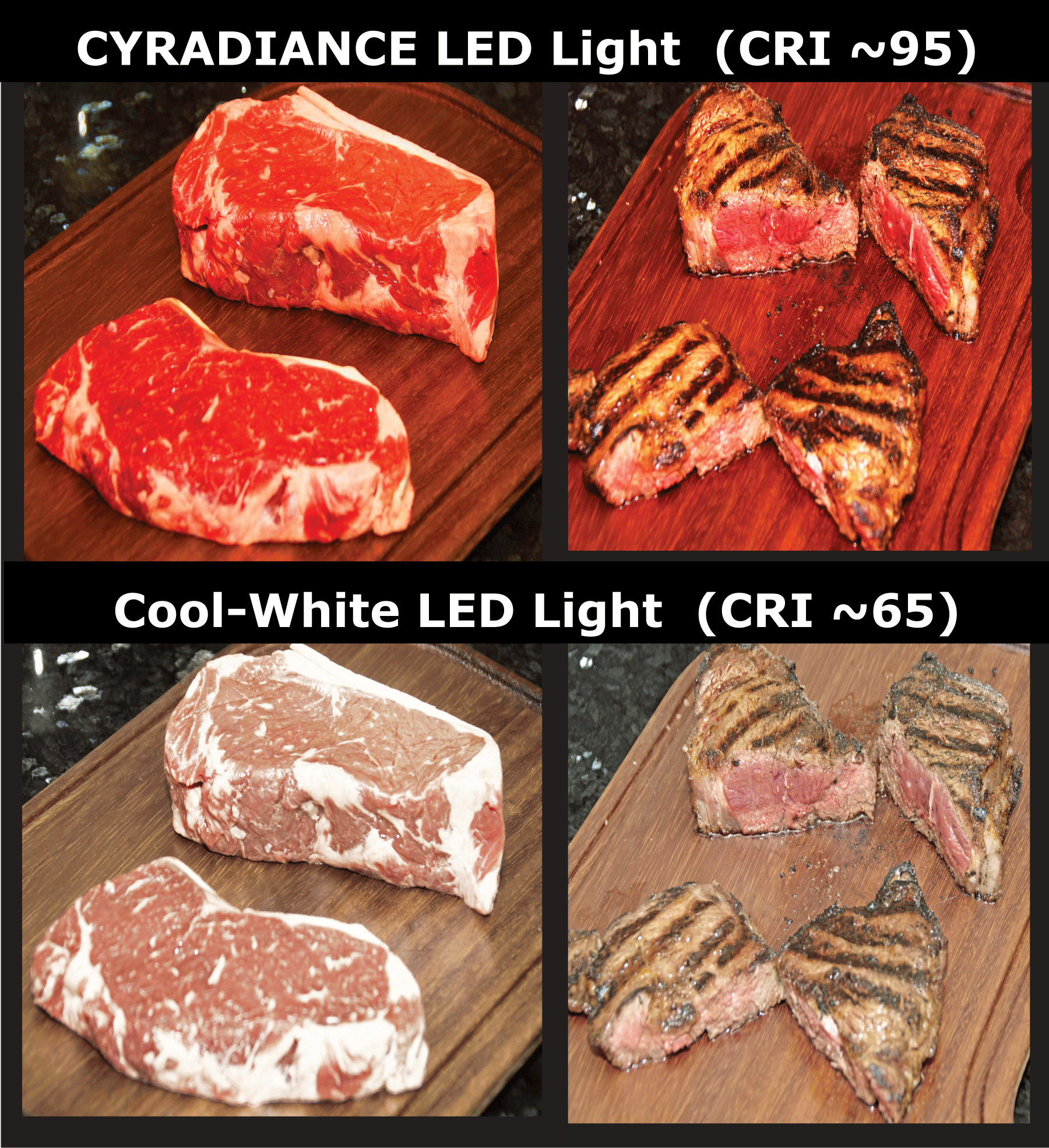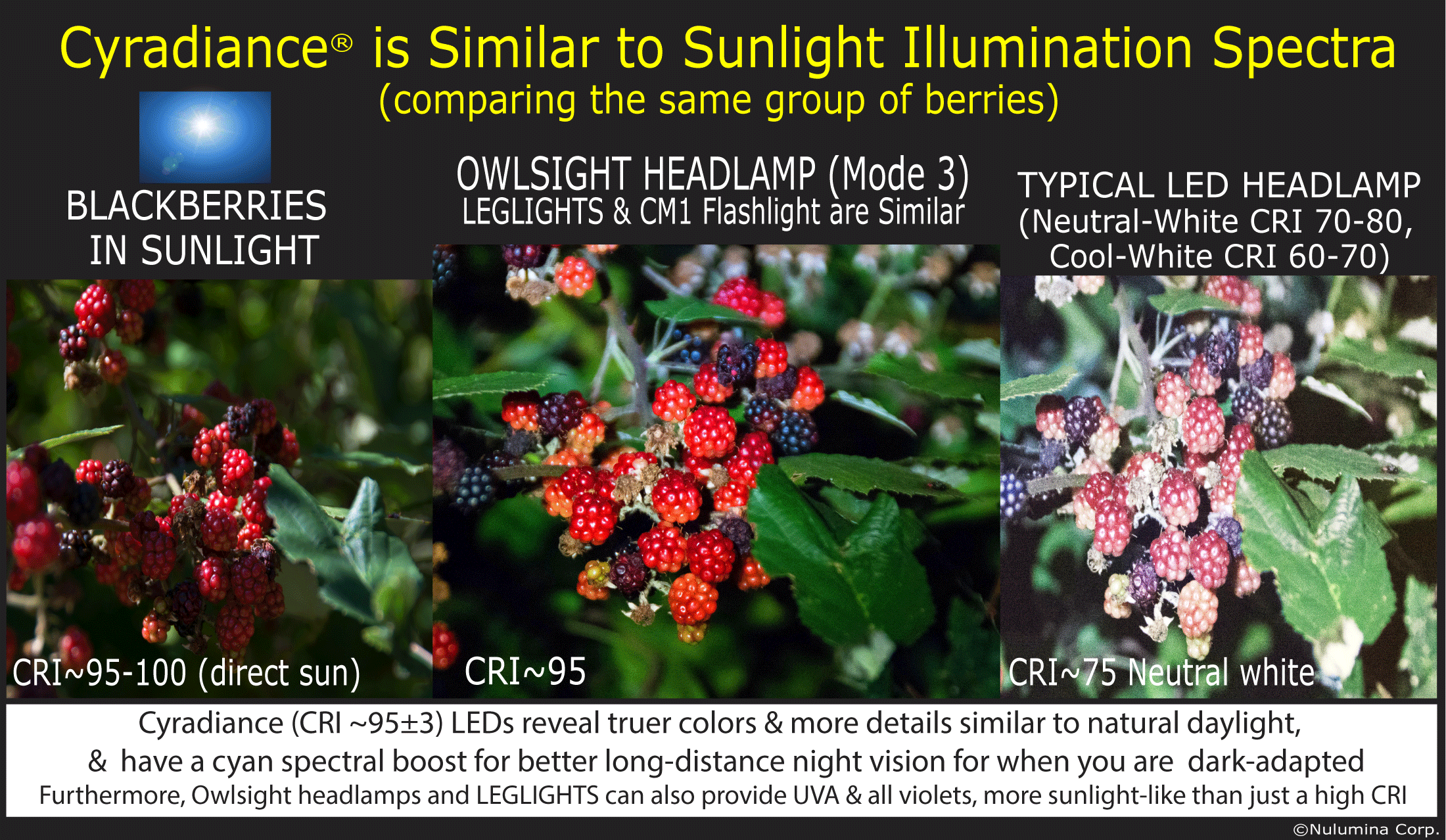

Nulumina Corporation

LIGHT SCIENCE
( A Brief Introduction )
See More - Be Safer - Do More
A Brief Introduction to Light Science
Light and vision have both been the subject of considerable research throughout history, and we are continually learning more. There are a great many related aspects of light and vision intertwined in every field of science.
Yet strangely, there are many common misconceptions about light and how human vision works. For example, misconceptions regarding the terms "brightness" and "lumens" have become common and reinforced by many supposed "experts" that also misunderstand the terms they use and the implications, but these are engineering terms with specific meanings quite different from that of frequent common usage.
Our focus here is on helping most people see better in dark places using light sources, especially outdoors while on the move.
In this very brief and focused introduction, we will introduce you to some aspects of what we have learned, and how we are using light science to improve your vision at night. There is considerable mis-information out there, so seek out credible sources as you explore light, vision, and dark-adaption on your own.
Of course, your night photos and videos can also be truer-color, richer, and sharper using ~95 CRI broad-spectrum light.

WHAT WE DISCOVERED:
Our studies of thousands of outdoor surfaces showed that ALL wavelengths of light - especially cyans, mid-to-deep reds, and violets - are reflected from almost all natural surfaces in daylight. Fluorescence and reflections from UV and violet-to-blue light influence much of our surface detail perception and ability to see liquids (water, oils) on surfaces. Each light wavelength carries surface details to your eyes.
Mostly Mid-reds and deep-reds are reflected from the majority of difficult to see darker surfaces, and these color wavelengths define many patterns and textures in even green plants.
[Check back soon to discover more on our upcoming "Light Science" pages.]
DID YOU KNOW that today's most popular LED flashlights & headlamps use LEDs that are deficient in half of the color wavelengths of the visible light spectrum?
Every visible wavelength of light carries important detail about structure, shape, texture, and transparency to your eyes, not just "color" perception.
Also, did you know that "lumens" of "brightness" is NOT a measure of the total amount of visible light from a lamp? Lumens is a "perception" measurement that is highly spectra dependent and can result in seeing much less as the intensity increases instead of more.
Actual total light from a light source is measured in watts of radiant light power, not lumens. "Brightness" in "lumens" is calculated from total radiant light power using a 1931 CIE human light sensitivity vs. wavelength algorithm from a study of what was considered to be "average" humans in 1930 (known to be flawed, but the old 1931 standard is still used to define "lumens" of "brightness even though the CIE provided several corrections over the last 80+ years). Additionally, "lumens" only applies to observers that are not dark-adapted.
The 1931 lumens metric rates yellow photons at 10-50X higher lumens than "visible-spectral-range" violets, deep-blues and middle to deep-spectral range visible reds. But we found these to be some of the most important vspectral ranges outdoors, even though you often do not perceive these as "colors".
The rise of LEDs suddenly made it practical to make cheap LED lamps with mostly yellow-green light and a narrow blue spectral peak to get high lumens on a spec sheet. Before LEDs, the ubiquitous incandescent bulbs all had plenty of red and cyan light in their spectra, so this was never an issue.
Lumens of brightness as a primary comparison metric for lamps became confused with "amount of light" for many people after 60 years of use when almost all lamps were incandescent with similar spectra, but this misapplied metric stumbles badly when using LEDs for illumination of most natural outdoor objects since the spectra can easily vary far more than that of most other commonly used lamps.
Lumens can be used for comparing the "amount of light" from light sources when they have very similar white light spectra, such as mobile phones or TV screens, and incandescence bulbs. You can often use lumens to compare two cool-white LED lamps, but even then you can be mislead.
Sunlight: Sunlight exhibits 10X-20X lower lumens for a given amount of visible spectral light power range (400nm-720mn) because sunlight contains considerable light power at all visible wavelengths.
Even dim sunlight reveals far more detail than the brightest cool-white or neutral white LED lights of almost everything. Exceptions are pastel & highly reflective surfaces (like pale color sand, concrete, or dry grass), or near-white surfaces with high contrast (like black & white text).
For example, based on the lumens algorithm, Sunlight would be rated at 10% of the brightness of typical LED flashlights for a given amount of total light (photons or radiant light power), even only counting the visible light wavelength photons. But, you can easily see that even dim sunlight reveals more details for the widest range of surfaces than most super-bright LED flashlights, regardless of the lumens rating.
We learned that light spectra, radiant power range, and efficiency are the most important parameters for assessing lamps! Oh yes, and you really want to know the spectral reflectivity range of the objects you want to see better.
VISIBLE LIGHT SPECTRUM
We consider 400-700nm to be the most useful visible light spectral range, but most people can see light well beyond this range if the light intensity is high enough


Oil On Asphalt
BEYOND LUMENS: Nulumina's revolutionary new CYRADIANCE TECHNOLOGY was designed to optimize both rod and cone vision by providing light at the color wavelengths most useful for enhancing your terrestrial vision of hazards at night, and adequate energy at all the other light wavelengths for running, hiking, biking, spelunking and most other activities where you need to illuminate natural objects in the dark. We developed new LEDs, photonics materials, lenses, active (light -converting) filters and more to better match both the properties of the colors we need to see in order to increase the perception of details in the darkest and most difficult conditions.
Nulumina's Precision Illuminators provide Full-Visible-Color Spectra + optional UVA Light with CRI (Color rendering index) values averaging 95, which means that they are capable of producing light close to natural sunlight or incandescent lighting. You can see vastly more Colors, Textures, Patterns, Contours, & Other Surface Details using High CRI, full-color spectra lights that reveal all colors in surfaces. The selectable UVA in the Owlsight and LEGLIGHTS also brings out fluorescent effect in many surfaces like sunlight, including many of the most vibrant natural colors and bright whites in clothes containing, or washed in detergents containing brighteners (most detergents).
When selecting light spectra, angles, and intensity for illumination to better see surfaces in dark places, you need to consider the environment, your objectives, cost, power use, portability, your eyesight condition and the surfaces you will be illuminating. The surfaces you illuminate also include background light levels, background surfaces that provide contrast, and nearby surfaces that might reflect or filter light back onto the subject or to you. This may all sound complex, but your brain does almost all this complex image processing and initial analysis without you even realizing it. However, new situations and dark surfaces with little contrast can trip you up. It is not difficult to fool the eye-brain system.
Typical 'super-bright" LEDs (mostly yellow-green light with a narrow blue peak) not only miss HALF the spectral visual detail, but they can also wash-out & hide details reflected from even yellow objects by blinding you to anything outside the primary beam of light and by over-saturating the yellows and yellow-greens in surfaces.
Higher brightness of poor quality light can provide a false sense of security because your brain associates more brightness with more information, but the opposite is true for most natural outdoor surfaces when using almost all LED flashlights and headlamps in the market at this time.
You need ample wide-spectra red light intensity to better see browns, near-blacks, and details in most natural green surfaces even though red light adds few lumens. Even worse is the spectral weakness of cyans from other LED illuminators because our eyes' rods dominate our vision in the darkest conditions and our rods are most sensitive to cyans. Weak spectral cyan means your illuminated long-distance vision is severely limited for a given radiant light power.
Example Image Comparisons
For cameras and video, Nulumina CYRAD lamps can provide much better color and higher quality images than other LED headlamps and flashlights, but the biggest advantage is for your eyesight!
Camera sensors and your eyes work quite differently (to be explained in updates to this site in the future). However, the images below provide some indication of the differences you are likely to observe.

The image below shows blood on a temperate forest floor using Cyradiance Technology light (OwlSight Mode 3 with no UV), and the same site illuminated by a typical famous brand neutral white LED headlamp. We found Cyradiance light revealed blood, scat and many other materials on almost all surfaces far better than even supposed "Blood-Lights."
OWLSIGHT, LEGLIGHTS, and the CM1 flashlights all have Cyradiance spectrum light, like used in the this blood image comparison.

SEE EVERYTHING BETTER
These comparisons of meat, vegetables, and fruit show how the wide range of colors and detail are better revealed. Less over-saturation by yellows also helps your eye discern more detail.
The meat and harvest images below compare "super-bright" cool white LED light to Cyradiance LED light of similar total radiant flux. Most cool-white LED lamps are often called "super-bright" by lamp sellers, which actually means the spectrum is mostly yellow-green light with a high narrow blue spectral peak. The eye perceives this spectrum as white and "bright" even for low-intensity light. Unfortunately, most natural material's details are actually obscured under cool-white illumination.


The image sequence below is on the Home page of this website. The version of this slide show below shows larger spectral detail for 6 of the 12 spectral modes of Nulumina's Owlsight headlamp LED light, neutral white LEDs, and some berries under sunlight.
Enhancing Your Dark-Adapted Night Vision
Nulumina precision illuminators can help you excel using your super-power of dark-adapted vision, while using minimal battery power.
Cyradiance LEDs in all our illuminators, Cyradiance MW LEDs (LEGLIGHTS-Only), and ActiveRed filters (Owlsight Headlamp and CG2 flashlight) were all created to provide you with supernormal vision and great dark-adapted vision capabilities, unlike any other wearable/portable lighting systems with limited spectral color ranges, very-limited red LEDs or ordinary red filters, and single light source angles.
Link here to go to our section on Dark-Adapted vision for more details.
LIGHT ENHANCEMENT IS ANALOGOUS TO QUALITY AUDIO: Vision and hearing both have a "midrange" of highest sensitivity often described as brightness (lumens) or loudness (decibels SPL). The Cyradiance vision-boost concept is analogous to how quality hearing aids or audio equalizers increase the sound intensity at high and/or low frequencies where your hearing is less sensitive to improve your ability to hear more detail.
Light and Sound Have Similarities in Human Perception


You don't like "loud" bad-quality sound.
Why view your world using bad-quality "bright" light?
Spectral quality and appropriate intensity for the task is the key to detail revealing audio and vision!
You want to know the frequency range of your audio components, and you likely boost your bass and treble to hear more detail in music in frequency ranges where our hearing is weaker.
You should want to do the same with your illuminating light spectra for most situations if maximizing detail perception is your goal.
Full-color-spectrum illumination makes your
nighttime excursions more enjoyable and safer!
See more visual effects of daylight
